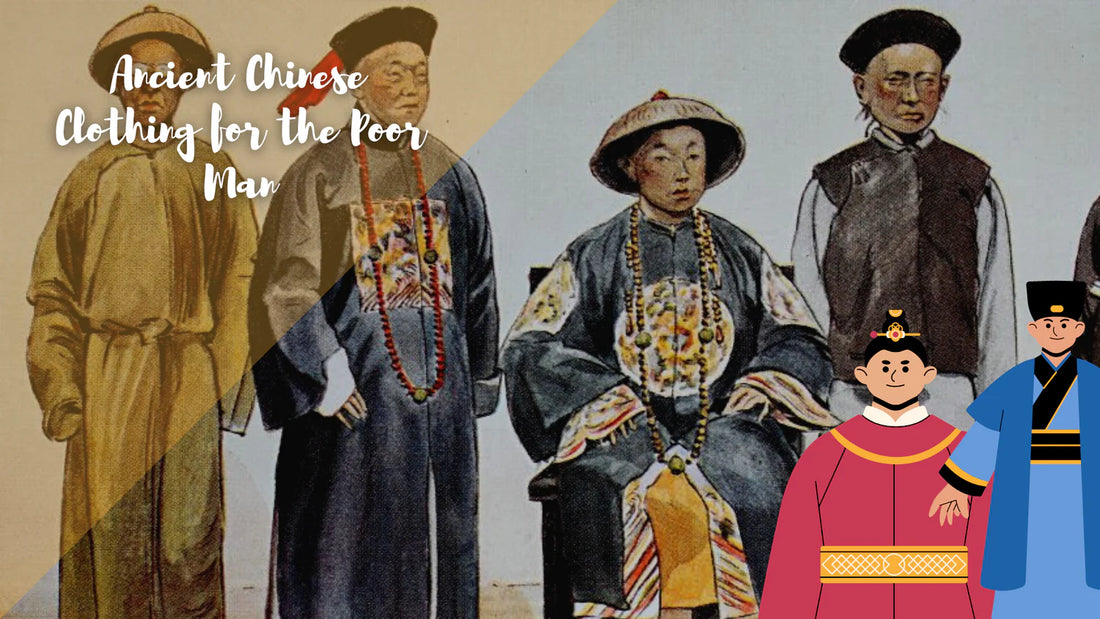In ancient China, clothing was an important aspect of daily life and social status. However, for the poor man, clothing was more functional than fashionable. The clothing of the poor man in ancient China was often made from cheaper materials such as hemp or cotton, rather than silk which was reserved for the wealthy.
Typically, the clothing of the poor man consisted of a simple tunic and pants made from rough fabric. The tunic was loose fitting and could be short-sleeved or long-sleeved depending on the season. Pants were also loose fitting and typically reached just below the knee. Both pieces of clothing were designed to allow for ease of movement and were practical for everyday tasks such as farming or manual labor.
In colder weather, the poor man would wear a padded jacket or coat made from layers of fabric to keep warm. This type of garment was often made from recycled scraps of fabric and was quite durable despite its humble beginnings.
Accessories were not common for the poor man, but when worn, they were simple and practical. A hat or cap might be worn to protect the head from the sun or rain, and shoes were typically made from durable materials such as canvas or leather.
Overall, the clothing of the poor man in ancient China was simple, functional, and designed for everyday use. While it may not have been fashionable, it served its purpose and allowed the wearer to go about their daily work with ease.
Despite being simple and functional, clothing for the poor man still had some variations depending on factors such as region, climate, and occupation. For example, in northern China where winters were harsh, the poor man's clothing was often made from heavier fabrics and included additional layers to provide warmth. In warmer southern regions, lighter fabrics like cotton were used.
Occupation also played a role in the type of clothing worn by the poor man. Farmers would wear loose-fitting clothing that allowed them to move freely while working in the fields. Fishermen and sailors wore waterproof coats and hats to protect themselves from the water.
In addition, there were certain colors and designs that were associated with the lower classes. Blue and black were commonly worn by the poor man because they were less expensive than brighter colors. Clothing for the poor man was also simpler in design, lacking the intricate embroidery and patterns found in clothing worn by the wealthy.
Despite the practicality and simplicity of their clothing, the poor man took pride in their appearance and did what they could to maintain their garments. They would patch holes, wash and mend their clothes regularly, and even dye them to extend their lifespan.
Overall, the clothing of the poor man in ancient China reflected their social status and practical needs. While it may not have been luxurious or fashionable, it served its purpose and allowed the wearer to go about their daily life with dignity and respect.
You may discover and share more Hanfu at here:
www.shophanfu.com

